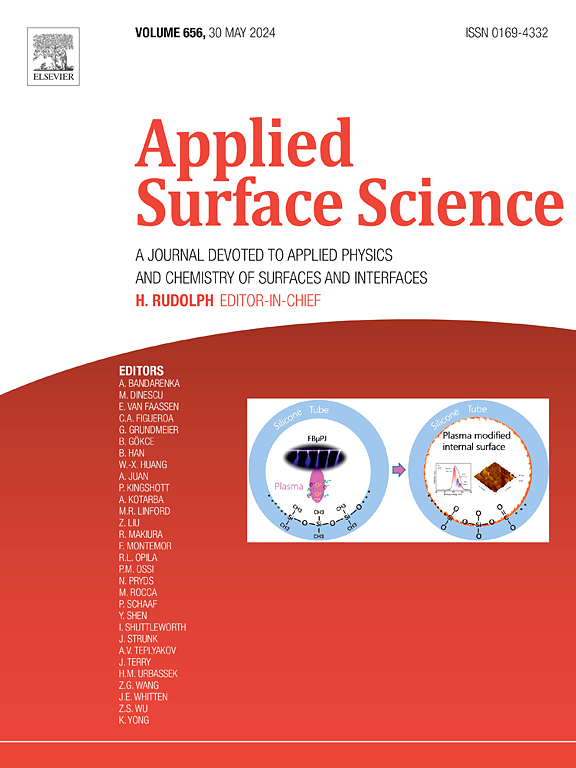P掺杂提高氮化硼碳锌空气电池氧还原反应性能
IF 6.9
2区 材料科学
Q2 CHEMISTRY, PHYSICAL
引用次数: 0
摘要
碳基无金属材料作为氧还原反应(ORR)的催化剂受到了广泛的关注。在这些材料中,氮化硼碳(BCN)由于其优异的电化学稳定性、优异的耐腐蚀性和高比表面积而成为一种有前途的功能材料。然而,BCN的催化活性仍然不理想,可能是由于它与*OOH的弱结合。本研究采用一步煅烧法合成了掺磷BCN (P-BCN),并将其用作高效的ORR催化剂。P-BCN的半波电位(E1/2)为0.823 V,显著高于BCN的0.764 V,表明ORR活性增强。此外,经过5000次加速耐久性测试,P-BCN的E1/2仅降低了3 mV,证明了其强大的ORR稳定性。实验数据和密度泛函理论(DFT)计算均证实了P-BCN显著的电化学性能是由于其增强*OOH结合、增加载流子浓度和加速电荷转移速率。此外,在锌空气电池(ZAB)中,P-BCN的开路电压为1.42 V,峰值功率密度为155 mW/cm2,比容量为605 mAh/g,显示出实用潜力。本研究提出的新策略为碳基无金属ORR催化剂的广泛应用提供了有价值的参考。本文章由计算机程序翻译,如有差异,请以英文原文为准。

Enhanced oxygen reduction reaction performance in boron carbon nitride through P doping for zinc-air batteries
Carbon-based metal-free materials have garnered significant attention as catalysts for the oxygen reduction reaction (ORR). Among these materials, boron carbon nitride (BCN) has emerged as a promising functional material owing to its exceptional electrochemical stability, superior corrosion resistance, and high specific surface area. However, BCN’s catalytic activity remains suboptimal, possibly due to its weak binding with *OOH. In this study, phosphorus-doped BCN (P-BCN) was synthesized using a one-step calcination approach and employed as an efficient ORR catalyst. P-BCN exhibits a half-wave potential (E1/2) of 0.823 V, which is significantly higher than BCN’s 0.764 V, indicating enhanced ORR activity. Furthermore, after 5000 cycles of accelerated durability testing, P-BCN’s E1/2 decreases by only 3 mV, demonstrating its robust ORR stability. Both experimental data and density functional theory (DFT) calculations confirm that P-BCN’s remarkable electrochemical performance results from its enhanced *OOH binding, increased carrier concentration, and accelerated charge transfer rate. Additionally, in a zinc-air battery (ZAB), P-BCN delivers an open-circuit voltage of 1.42 V, a peak power density of 155 mW/cm2, and a specific capacity of 605 mAh/g, demonstrating practical potential. The novel strategy proposed in this study offers a valuable reference for the broader application of carbon-based metal-free ORR catalysts.
求助全文
通过发布文献求助,成功后即可免费获取论文全文。
去求助
来源期刊

Applied Surface Science
工程技术-材料科学:膜
CiteScore
12.50
自引率
7.50%
发文量
3393
审稿时长
67 days
期刊介绍:
Applied Surface Science covers topics contributing to a better understanding of surfaces, interfaces, nanostructures and their applications. The journal is concerned with scientific research on the atomic and molecular level of material properties determined with specific surface analytical techniques and/or computational methods, as well as the processing of such structures.
 求助内容:
求助内容: 应助结果提醒方式:
应助结果提醒方式:


